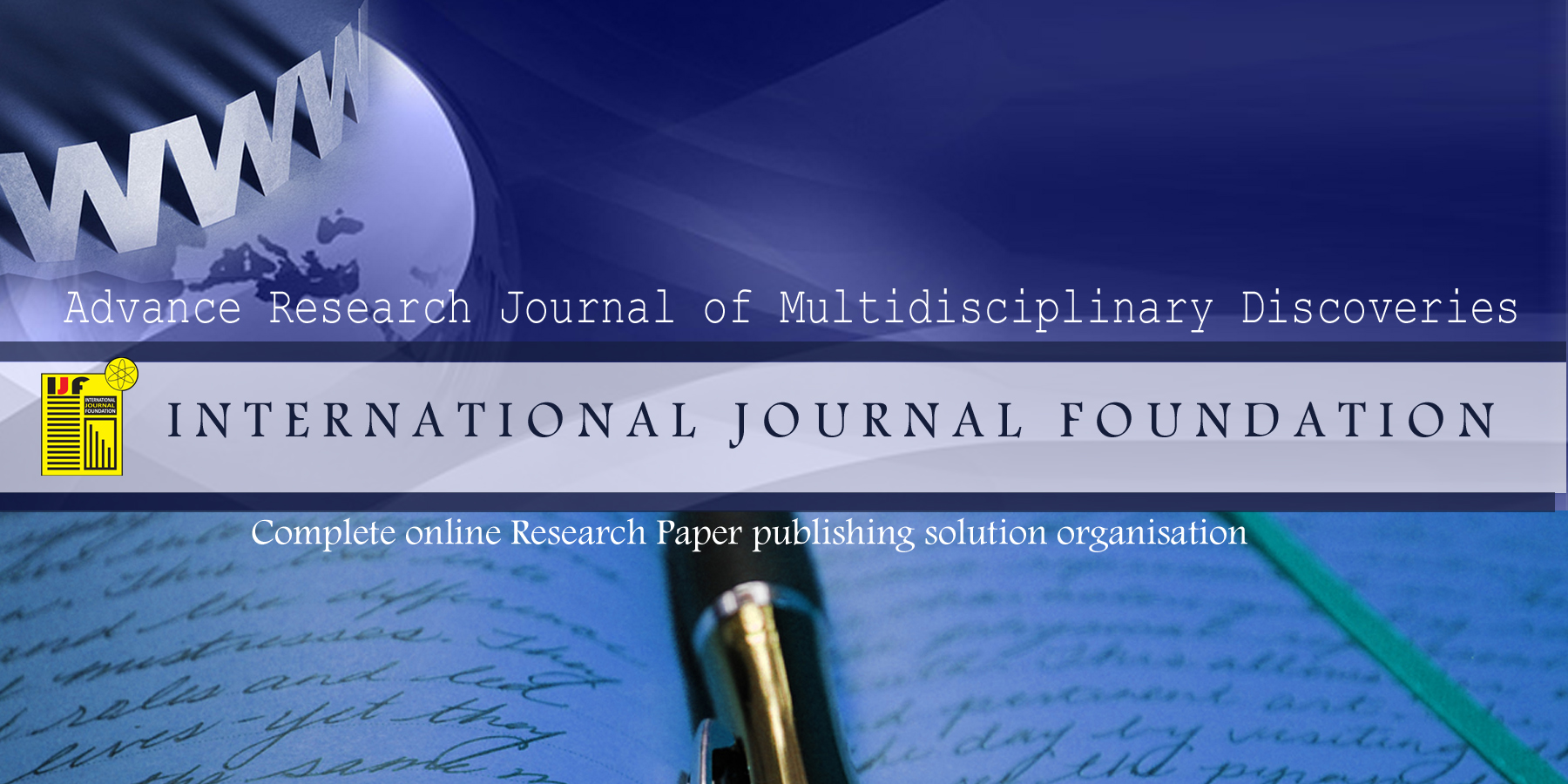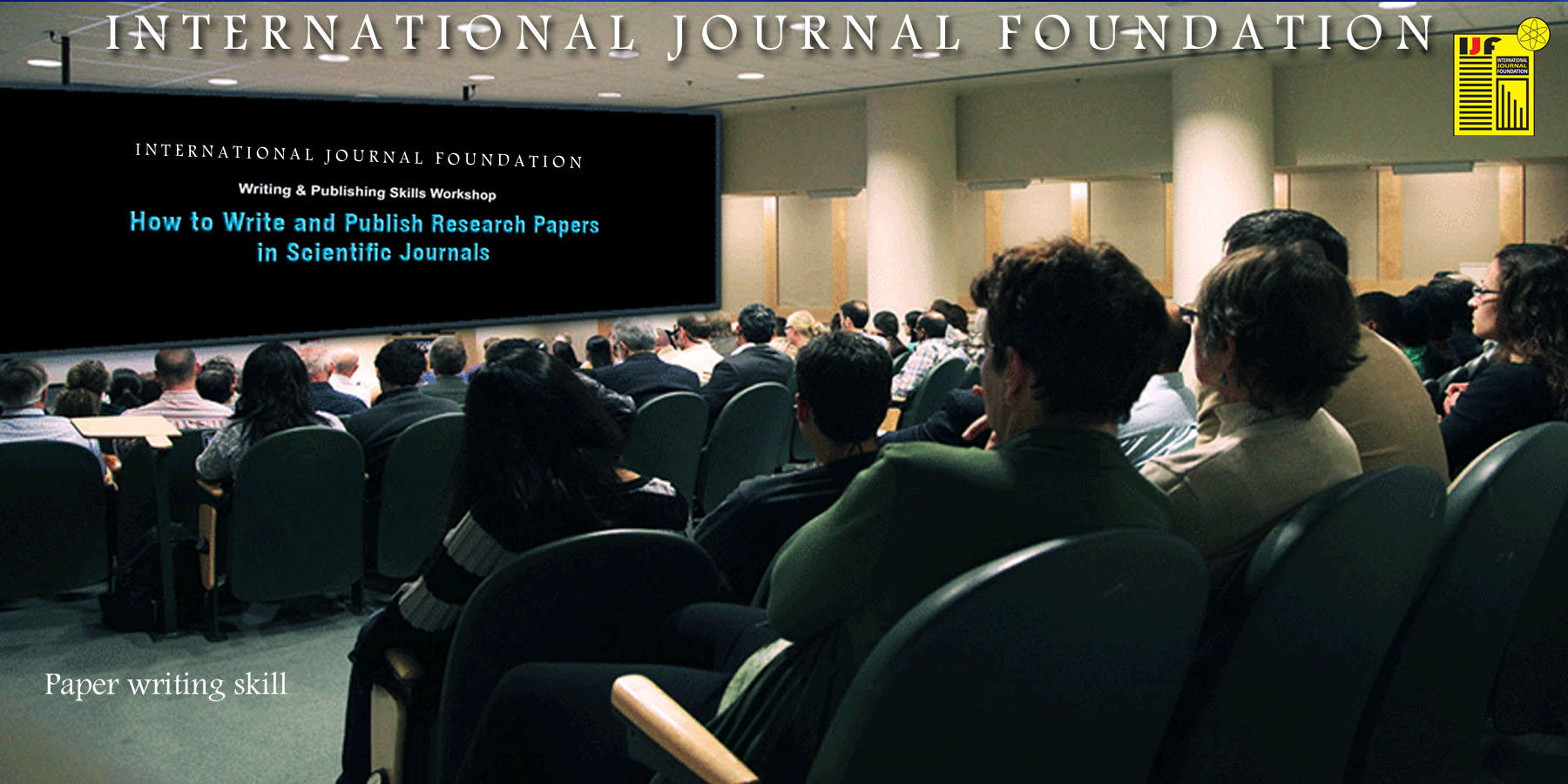2017
SEPTEMBER 2017/ Vol.17.0/ Issue-I
CATEGORY : Research Topic on Business Management
| SL.No. | Detailed information of the published article |
| 1 | TITLE NAME: AN EMPIRICAL RELATIONSHIP AMONG TAX REVENUE, NON-TAX REVENUE, GRANTS, EXPENDITURES AND ECONOMIC GROWTH IN SRI LANKA : An analysis of Co-integration and Causality Author’s Name : S. Nisthar1 & AAM. Nufile2 Article Type : ORIGINAL RESEARCH ARTICLE Country from : SRI LANKA DOP: 13-10-2017/ Chapter-I/Page – 01-07 [ SEPTEMBER ISSUE ] Article Code : BM-V17-I1-C1-SEP2017 [ ORIGINAL RESEARCH ARTICLE ] Status : Officially published / Download: E-Certificate, Full Article (pdf) —————————————————————————————————————————– Abstract : This research article analyzed the objective of statistically finding the empirical relationship among tax revenue, non-tax revenue, grants, expenditures and economic growth in Sri Lankan context. The annual time series data used in this study were gathered from Annual Report of Central Bank of Sri Lanka for the time period of 1950 to 2014. click here Stability test, residual test for testing the best regression model, Johansen co-integration technique to test the long run relationship, Augmented Dickey Fuller (ADF) for unit root test, and Granger causality test for causal relationships between all the variables were the econometric technical process being used to achieve the objective of this study. It was found that ere was a direct association ship between the dependent and some of the independent variables. The R-squared of the regression model was higher than 0.9. Most of the variables were stationary at the level form I(0). It was found that there were the different types of causal relationships between all the variables. The long run relationship between all variables was identified through co-integration test.Keywords: Tax Revenue, Economic Growth, Grants, Co-integration, Causality.
|
CATEGORY : Research Topic on Social Science & Humanities
| SL.No. | Detailed information of the published article |
| 2 | TITLE NAME : PRENATAL DIAGNOSIS IS A MEDICAL TECHNOLOGY – Not a reality In india Author’s Name : JAYEETA BASU Article Type : ORIGINAL RESEARCH ARTICLE Country from : Kolkata (INDIA) DOP: 13-10-2017/ Chapter-II/Page – 08-11 [ SEPTEMBER ISSUE ] Article Code : SS-V17-I1-C2-SEP2017 [ ORIGINAL RESEARCH ARTICLE ] Status : Officially published / Download: E-Certificate , Full Article (pdf) —————————————————————————————————————————– Abstract : Sex determination is illegal in India, there must be tampered means with the medical assistance available with the advancing technology. Women tend to live longer if given equal care and nutrition like the men. Even then, the men outnumber the women where the sex-ratio is not equal today. click here This has several effects not only upon the natural balance but also seeks to put the health of the women at risk. The value of a woman is realized with her ability to give birth to a son only still in countries like India. Medical advances through the advent of the USG Technology have made the tasks of the corrupters quite easier. Some demographers question whether sex-selective abortion or infanticide claims are accurate, because underreporting of female births may also explain high sex ratios. Female foeticide has been linked to the arrival, in the early 1990s, of affordable ultrasound technology and its widespread adoption in India. The focus of the paper is on how the technology is being misused every time to kill the girl child at the womb itself often without the consent of the mother. This is solely for the illogical preference for sons over their daughters. Pre-Conception and Pre Natal Diagnostics Techniques Act,1994was formulated to put a check on the tendency to brutally kill the fetus at the womb. This makes the people dependent on the medical professionals and but unfortunately at times it has been possible to tamper their views against money defying all rules of nature with the help of technology.Keywords: prenatal diagnosis, foeticide, induced abortion, sex determination

|
CATEGORY : Research Topic on Medical Science
| SL.No. | Detailed information of the published article |
| 3 | TITLE NAME : LABORATORY ASSESSMENT OF THE MOLLUSCICIDAL AGAINST THE SNAIL AND FISH AT BARAKAT AREA (IRRIGATED CANAL) WAD MEDANI, GEZIRA STATE- SUDAN (2013) Author’s Name : Abdelrhman A.G ALTIJANI PhD1, HASSAN Elbashir Prof3,2, ABDELRAHMAN Samira Prof3, NOUR Bakri Prof4. Article Type : ORIGINAL RESEARCH ARTICLE Country from : SUDAN, KSA DOP: 13-10-2017/ Chapter-III/Page – 12-15 [ SEPTEMBER ISSUE ] Article Code : MDS-V17-I1-C3-SEP2017 [ ORIGINAL RESEARCH ARTICLE ] Status : Officially published / Download: E-Certificate , Full Article (pdf)———————————————————————————————————————– Abstract : Objective: The aim of this Study was to assess the molluscicidal against Snail Bulinus truncatus and Fish Gambusia affinis. click here Methods: Extracts of Bayluscide 83.1% WP were activities against adult Bulinus truncatus and Gambusia affinis. The suspected dead snails were examined under a dissecting microscope at 30x magnification ,then a fish was considered dead when motionless, bloating and/ or its colour change under a dissecting microscope at 30x magnification, and the LC50 value for the molluscicidal tested were computed. Result: for the molluscicidal activities of Bayluscide 83.1% WP, the LC50 value against Bulinus truncatus and Gambusia affinis was (230,640 ppm) respectively. The aqueous extract of Bayluscide 83.1% WP is exhibited reasonable molluscicidal activity against the target population. however, comprehensive laboratory evaluation is recommended prior to field tests of the molluscicidal since their impact on other aquatic biota is not known. Keywords: Schistosomiasis, Bulinus truncatus, Gambusia affinis, molluscicidal.  |
CATEGORY : Research Topic on Textile Engineering
| SL.No. | Detailed information of the published article |
| 4 | TITLE NAME : SPIRALITY AND SHRINKAGE PROBLEMS ASSOCIATED WITH LOOSE KNIT PLAIN SINGLE JERSEY COTTON FABRICS Author’s Name : Faisal Bin Alam Article Type : ORIGINAL RESEARCH ARTICLE Country from : BANGLADESH DOP: 13-10-2017/ Chapter-IV/Page – 16-19 [ SEPTEMBER ISSUE ] Article Code : TE-V17-I1-C4-SEP2017 [ ORIGINAL RESEARCH ARTICLE ] Status : Officially published / Download: E-Certificate , Full Article (pdf) —————————————————————————————————————————– Abstract : Dimensional stability as a quality parameter bears immense significance for weft knitting fabric manufacturing industries. To meet the dimensional requirements, especially to control Spirality and Shrinkage percentage becomes more challenging when the fabric is loosely knitted. click here This paper puts an attempt to reveal shrinkage and spirality problems associated with loose knit single jersey fabrics in comparison to regular knit plain fabrics.Keywords: Loose knit, Plain Single Jersey, Spirality, Shrinkage, Stitch Length / Loop Length.
|
CATEGORY : Research Topic on Agricultural Science
| SL.No. | Detailed information of the published article |
| 5 | TITLE NAME : EVALUATION OF INTEGRATED FISH FARMING WITH CHICKEN AND VEGETABLES IN SILTE DISTRICT OF SOUTHERN ETHIOPIA Author’s Name : Dinku Getu1*, Fekadu Amare1, Tekleyohannes Berhanu2, Hizkiel Kinfo1, Tsegaye Terefe1 Article Type : ORIGINAL RESEARCH ARTICLE Country from : ETHIOPIA DOP: 13-10-2017/ Chapter-V/Page – 20-27 [ SEPTEMBER ISSUE ] Article Code : AGS-V17-I1-C5-SEP2017 [ ORIGINAL RESEARCH ARTICLE ] Status : Officially published / Download: E-Certificate , Full Article (pdf) —————————————————————————————————————————– Abstract : The study was conducted in Silte district of Southern Ethiopia with the objective to assess the productivity and profitability of integrated fish with chicken and vegetable farming in the study area. A pond with a surface area of 150 m2 (10m*15m) and depth of 1.2m was used for the investigation. A poultry house was constructed over the pond with an open garden and a laying room. click here Twenty five White Leghorn chicken (5 cocks and 20 pullets) of two months old were introduced in to the shelter. Fingerlings of Nile Tilapia (Oreochromis niloticus) 330 fish in number were used to stock the ponds. Three vegetables, viz., onion (Red bombey), cabbage (Vikima) and tomato (ROMA VFN) were grown near by the pond using pond and stream water with or without inorganic fertilizer application.The result indicates that the mean values of pond water physico-chemical characteristics such as conductivity, average temperature, total digestible solute, salinity, resistivity, pH and dissolved oxygen (DO) of the pond water were 113.5µS, 250C, 84.5 mg/L, 0.07ppt, 8.3 MΩ, 8.1 and 4.5 mg/L, respectively. A total of 2392 chicken eggs were produced within 161 days. The total fishes produced in number were 3000 and their total weight was 326000 gram (g). The average weight of a fish was 108.7g. Vegetable production varied significantly (p<0.05) with pond and stream water and with or without inorganic fertilizer use. The partial budget analysis of the integrated farming indicates that the estimated net profit obtained on 0.25ha of land was 9336.13 Eth Birr (1 Birr = 0.044 USD). However, the net profits from a common crop in the area (maize), fish, chicken and vegetables alone were 2, 9, 18.2 and 72.8 % of the net profit obtained from the integrated system. This indicates that poultry-fish-vegetables integration fetches a higher revenue over the mono crop or mono livestock activities. However, to fetch maximum revenue from the integration, the water physio-chemical characteristics should be kept at constant, with proper species and number of fish introduced, managed and fed with chicken droppings from the optimum chicken number per square meter. Keywords: Fish-Chicken-vegetable integration, productivity, profitability, Silte Zone.

|
CATEGORY : Research Topic on Medical Science
| SL.No. | Detailed information of the published article |
| 6 | TITLE NAME : IMPACT OF HAZARDOUS PHYSICAL ENVIRONMENT ON NURSES’ SAFETY PERFORMANCE BEHAVIORS IN ICUs/CCUs : Conceptual Paper Author’s Name : Mohammad Adel Al-Bsheish 1, Munauwar bin Mustafa 2, Mohd Azril Ismail 3 Article Type : ORIGINAL RESEARCH ARTICLE Country from : MALAYSIA DOP: 13-10-2017/ Chapter-VI/Page – 28-35 [ SEPTEMBER ISSUE ] Article Code : MDS-V17-I1-C6-SEP2017 [ ORIGINAL RESEARCH ARTICLE ] Status : Officially published / Download: E-Certificate , Full Article (pdf) —————————————————————————————————————————– Abstract : Intensive care units (ICU) is one of the most essential units in hospitals due to a huge amount of critical lifesaving efforts there; however, occupational accidents are still quite high within these places; thus, mechanisms to improve workplace safety are needed. click here A growing body of safety research have kept attention to patient safety rather than providers’ safety. Likewise, studies have focused on hazardous physical environment effect upon patients more than healthcare providers; therefore, expanding the body of literature related to nurses’ safety as a major component of health care team is necessary. This paper aims to raise the level of ICU/CCU nurses’ safety performance by inspecting factors that could predict safety compliance and safety participation. Subsequently, depending on Social Cognitive Theory (SCT), a possible link is expected between nurses’ perception of hazardous physical environments which have not been under focus enough previously and both of safety compliance and safety participation as integral dimensions of safety performance behaviors. Keywords: Hazardous Physical Environment, Safety Compliance, Safety Participation, Intensive Care Units (ICUs), Coronary Care Units (CCUs), Social Cognitive Theory (SCT).

|
CATEGORY : Research Topic on Medical Science
| SL.No. | Detailed information of the published article |
| 7 | TITLE NAME : Structural Characteristics, Antitumor and Antioxidant Properties of Polysaccharides isolated from the brown algae Stypopodium schimperi growing on the Lebanese coast. Author’s Name : Haddad1 M., Zein1 S., Hazimeh1 G., Karaki1 R., Krivoruchko3 E., Makhour4 Y., Kassem2 Z. Kanaan*1 H. Article Type : ORIGINAL RESEARCH ARTICLE Country from : LEBANON DOP: 13-10-2017/ Chapter-VII/Page – 36-43 [ SEPTEMBER ISSUE ] Article Code : MDS-V17-I1-C7-SEP2017 [ ORIGINAL RESEARCH ARTICLE ] Status : Officially published / Download: E-Certificate , Full Article (pdf) —————————————————————————————————————————– Abstract : Objective: The purpose of this study was to extract, to determine the functional groups and to examine the antioxidant and anti-proliferative effect of the water-soluble polysaccharides fucoidan and sodium alginate extracted from the brown algae Stypopodium schimperi growing on the Lebanese coast. click here Materials and Methods: Fucoidan and sodium alginate were analyzed using 1H NMR, and FTIR methods to reveal their structures. Antioxidant effects were also tested, using DPPH method. The polysaccharides were tested in–vitro for anti-proliferative activity against the colorectal cancer cell lines (HT 29 and HCT 116) for 24h, 48h and 72h respectively, by the MTT cell viability assay. Results: The extraction yield of fucoidan and sodium alginate was 7.4% and 21% respectively. The structure of α-L fucose unit of fucoidan was confirmed through the spectrum of 1H NMR. M/G ratio of sodium alginate was calculated and found to be 0.96 which allows the formation of strong and heat stable gel. Both polysaccharides have an antioxidant effect with fucoidan the most pronounced. For the anti-proliferative effect, sodium alginate was able to inhibit the growth of HT 29 and HCT 116 more than fucoidan at the different time intervals. Conclusion: This study discusses the structure, the functional groups, the antioxidant and anti-proliferative effect of fucoidan and sodium alginate. Both polysaccharides showed an antioxidant effect which is dose dependent and they were able to inhibit the growth of HT 29 and HCT 116 with difference in the degree of inhibition between sodium alginate and fucoidan. These effects make them candidate in the field of medicine and food industry. Keywords: Stypopodium schimperi, fucoidan, sodium alginate, anti-proliferative, antioxidant.

|
CATEGORY : Research Topic on Social Science
| SL.No. | Detailed information of the published article |
| 8 | TITLE NAME : IMPLICATIONS FOR THERAPY, THERAPISTS, SOCIAL WORKERS, COUNSELORS AND OTHERS IN THE HELPING AND HEALING PROFESSIONS FROM PARTICIPATION IN MEN’S PEER MUTUAL SUPPORT GROUPS. Author’s Name : Edward Read Barton Article Type : ORIGINAL RESEARCH ARTICLE Country from : USA DOP: 15-10-2017/ Chapter-VIII/Page – 44-53 [ SEPTEMBER ISSUE ] Article Code : SS-V17-I1-C8-SEP2017 [ ORIGINAL RESEARCH ARTICLE ] Status : Officially published / Download: E-Certificate , Full Article (pdf) —————————————————————————————————————————– Introduction: This study first describes the way men are traditionally conditioned (i.e., damaged) by patriarchy in U.S. culture. This damaging enculturation not only inhibits men from seeking therapeutic help, but has also blinded some psychologists and therapists to the inadequacies of many of their traditional (i.e., patriarchal) therapeutic approaches. click here Aspects of social support and men’s work/men’s emotional healing work as accomplished in men’s peer mutual support groups are described, as well as other types of men’s support groups. These peer mutual support groups provide an individual an opportunity for self-help and self-care in a group setting. Liberatory research from men’s emotional healing work and men’s peer mutual support groups is then presented, including interview data from men who are therapists about the benefits of their personal participation in men’s peer mutual support groups, which has important beneficial implications for men, therapy, social workers, therapists, counsellors, and others in the helping and healing professions.
Keywords: men’s emotional healing work, men’s peer mutual support groups, therapeutic effects of men’s support groups, social support, and mythopoetic men’s work. |
N.B.
(i) To Publish your paper in our upcoming issue send your article directly at article.ijf@gmail.com
( ii ) E- certificate from publisher are free of cost. To get a Original Hard copy of “Publication Certificate“ from publisher please contact at journal.ijf@gmail.com
![]()
![]()
![]()
![]()
![]()
![]()
















